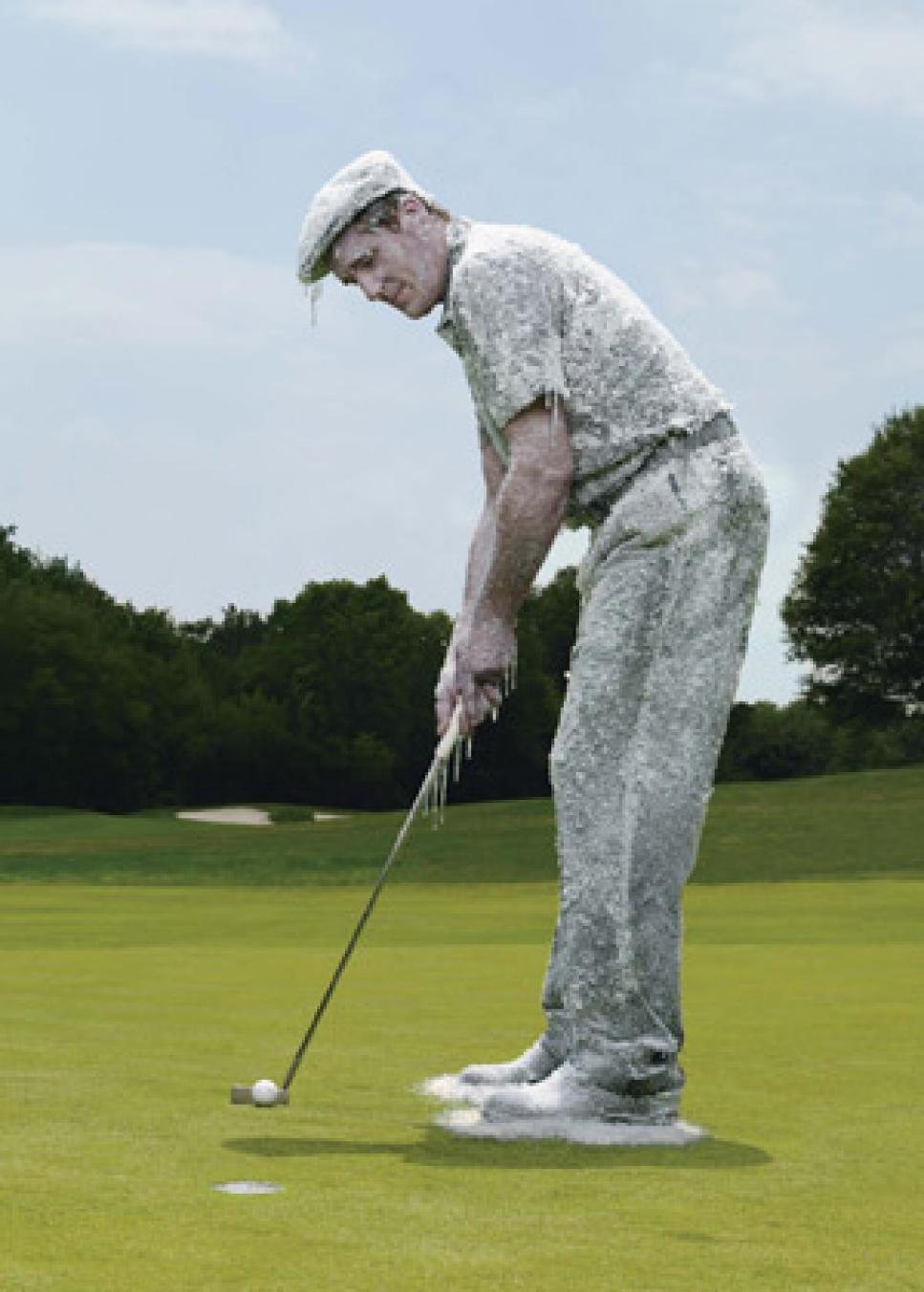Short Game
Your Putter Goes Cold

Though we endow them with human features -- heads, faces, heels, toes -- golf clubs are profoundly inhuman tools. Golf balls are sweet: dimpled and sometimes even smiling. But clubs, with their blank faces and covered heads, express only indifference to man's suffering.
Of all my clubs, my putter is the cruelest, bestowing and withdrawing its affections at random, keeping my heart (and near-gimmes) just beyond its grip. I've had brief and torrid affairs with all kinds of them -- tall ones, short ones, ones with fluctuating weight issues -- but each putter proved more fickle than the last. Some were literally two-faced.
Still, after countless failed relationships, I should at least consider the possibility that it isn't the putter. Maybe it's me.
I can't putt. The reasons are infinite. When lining up a putt, I can't remember if the ball always breaks to the ocean, or to the valley, or away from Pinnacle Peak. And because I took up the game in Minnesota, in what is often called Middle America, I also grew up asking: To which ocean does it break?
When it comes to reading greens, I'm illiterate. I know shiny grass is fast, and dull grass is slow. (Unless it's vice versa.) And that the grain always grows toward a setting sun. (Unless it's away from it.) But proper speed eludes me. Competing voices in my head say, Die it at the hole, and Run it 17 inches past. I usually run it nine feet past so I don't have to hear a third voice saying, "Nice lag, Alice." (That voice isn't in my head; it's in my ear, issuing from the mouth of my father.)
I don't plumb-bob. It looks ridiculous, plumb-bobbing for a four-putt. But I will lie prone on the green to read a break. This has done nothing for my putting, and even less for my dignity: At the munys I play, cigarette butts and goose excrement often cling to me when I stand back up.
Putting is so difficult, so universally vexing, that the best the pros can do is tell us how to miss. "Miss it on the pro side," they say, meaning miss it above the hole. I can't even do that consistently. I miss it on the pro side. I miss it on the amateur side. I miss it on both sides of the clown's mouth.
Worst of all, I'm famous for missing it precisely where the hole used to be. My ball comes to rest within that circular seam where the previous hole was just plugged, and I stare at my putterface in disbelief. That face always stares back, unblinking, unmoved.
TIP FROM DR. BOB ROTELLA: The more you don't care if you make it or miss it, the better your chances. And on the short ones, putt like your old man already gave it to you.